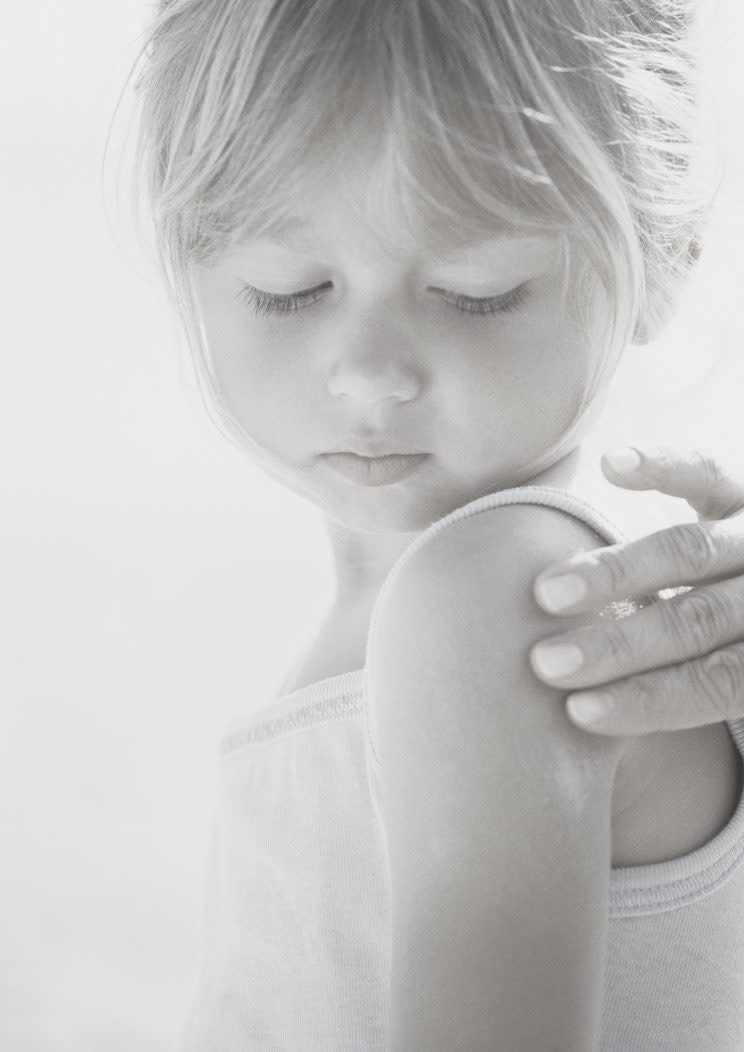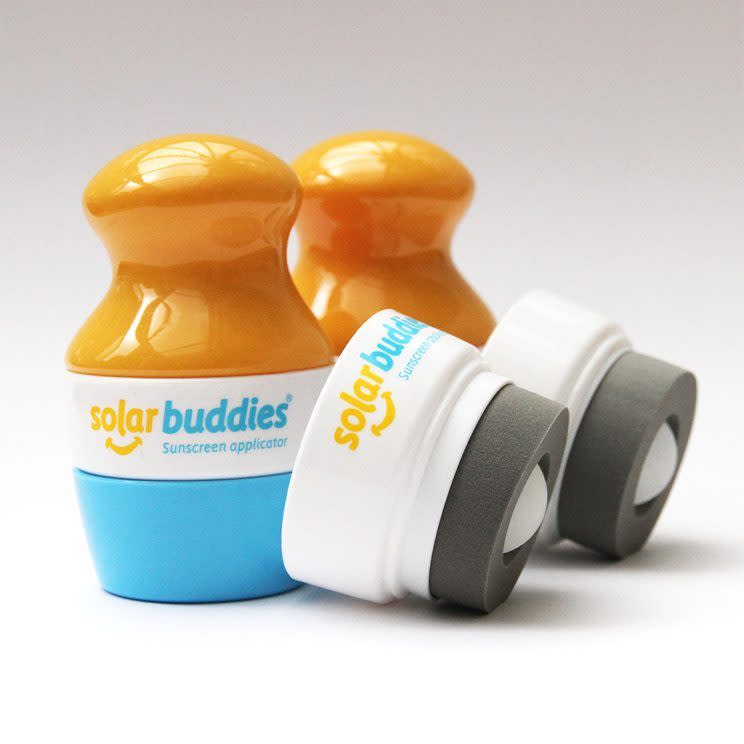Moms Invent Roll-On Sunscreen for Kids

When it comes to making sure kids are coated in sunscreen while at school and camp, parents, as well as teachers, face a big roadblock — and it’s not just because children don’t want to stand still while sunscreen is smeared on their skin. With the exception of California, many U.S. school districts and camps ban bringing in sunscreen since it’s considered an over-the-counter medication — unless kids have a doctor’s note.
The American Academy of Dermatology (ADA) released a position statement in May 2016 supporting the American Medical Association’s policy of making an exemption for sunscreen, especially considering that even one blistering sunburn during childhood or adolescence can nearly double a person’s chance of developing melanoma later in life, according to the ADA.
But even in cases where kids are allowed to bring sunscreen with them, some camps and schools have a “no touch” policy that prevents camp counselors and teachers from helping kids apply it. While that’s not a big problem for older children, it is for little ones who need a helping hand.
Newsletter: The Yodel
Trusted news and daily delights, right in your inbox
See for yourself — The Yodel is the go-to source for daily news, entertainment and feel-good stories.
With that in mind, two moms from South Wales, Kelli Aspland and Laura Griffin, who have seven children between them, came up with a creative solution for getting their kids to reapply sunscreen on their own during the school day. The moms worked with product design students at Cardiff Metropolitan University to design a refillable, roll-on sunscreen applicator called Solar Buddies that children can use to apply sunscreen on themselves — without the aid of an adult. It’s ergonomically designed so that small kids can easily grip it. Griffin and Aspland recommend filling the applicator with a broad spectrum sunscreen with an SPF of 30 or higher.

Along with wanting to make sure their own kids were protected from the sun, Griffin and Aspland were inspired by a friend of Griffin’s whose daughter got a sunburn while at school. “[Griffin] told me how … her friend’s daughter, who attended a different school, had been badly sunburnt whilst at school because the teachers were unable to assist the children in applying the sunscreen,” Aspland told the Daily Mail. “We then discussed how it would be great to have a product which would help the children to be protected from the sun whilst at school and an easier way for them to put lotion on, if they aren’t able to have assistance.”
Solar Buddies is now being sold for under $11 at JoJo Maman Bebe — a U.K. children’s store that’s a favorite of both Kate Middleton and Victoria Beckham — and a few other retailers around the U.K. It’s not yet available in the U.S., and unfortunately, there hasn’t been much innovation in the states when it comes to making it easier to get sunscreen on kids, with the main exception of MD Moms who created easy-to-apply, baby-safe, broad-spectrum sunscreen wipes with SPF 30. Nivea also launched a campaign last month that involved a fun slide on the beach that sprayed kids wearing eye goggles with SPF 50+ (although several organizations and dermatologists don’t recommend using spray sunscreen on kids).
While you should always apply sunscreen with an SPF 30 or higher before your kids head to school or camp in the morning — whether it’s sunny or cloudy out — it won’t protect them for the whole day. “Sunscreen lasts two to four hours on the skin,” Patricia Ceballos, M.D., of Schweiger Dermatology Group in New Rochelle, New York, tells Yahoo Beauty. “Exercising and sweating requires hourly re-application to ensure adequate protection.”
Ceballos adds: “Concerning children, it’s important that a sunscreen, preferably mineral, containing zinc oxide and titanium dioxide, be applied to the face during outdoor activities. Make sure to apply sunscreen 15-30 minutes before exposure.”
So what can parents to help make sure their children are protected during camp and school if reapplying sunscreen isn’t a possibility? “A hat offers some protection, but may not be adequate or suitable for active children,” he says. Although, there are wide-brimmed versions that clip securely under the chin so they stay put. The Skin Cancer Foundation says even wearing a sun visor or baseball cap is better than nothing. Sun protective clothing also helps. “Wearing protective clothing with built-in sunscreen protection — SPF 50 brands are available commercially — is equally, if not more, effective as sunscreen.”
Let’s keep in touch! Follow Yahoo Beauty on Facebook, Twitter, Instagram, and Pinterest.
Solve the daily Crossword

